Nvidia GeForce GTX 1060 Review
Nvidia’s new mid-range graphics card is as fast as a GTX 980 and faster than AMD’s Radeon RX 480.
Update: Click here to figure out which graphics card is right for you.
With Nvidia ruling the performance end of the GPU spectrum with its GeForce GTX 1080 and GeForce GTX 1070 graphics cards, AMD saw fit to capitalize on the mid-range market with its recently released Radeon RX 480. Not one to be outdone, however, Nvidia has released its own mid-range graphics card, the GeForce GTX 1060. The GPU will start at $250, though this review covers the $300 Founders Edition, which uses Nvidia’s own reference design.
Nvidia asserts that the GTX 1060 will run 15 percent faster than AMD’s RX 480 on average and will be as fast as Nvidia’s GeForce GTX 980, which was the company’s $550 flagship GPU nearly two years ago. Those are some lofty claims, and I'll be putting them to the test.
Design
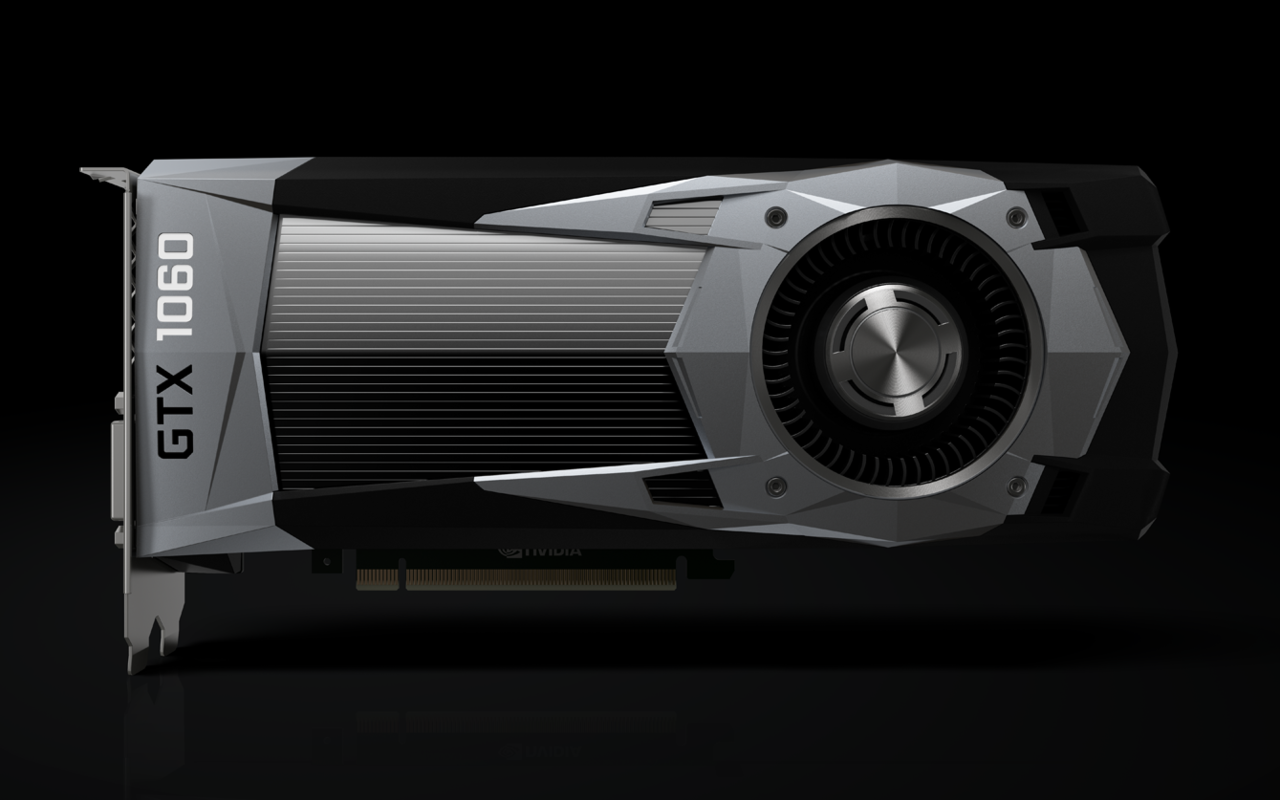
In case you’re wondering, Nvidia’s more expensive Founders Edition GTX 1060 does not use a higher-quality binned GPU that performs better. Like the GTX 1080 and 1070 Founders Edition cards before it, this version uses a die-cast aluminum body finish and a radial fan, which exhausts heat outside the back of the case. It also has two copper heat pipes and an aluminum heatsink, which help keep the card cool (more on the 1060’s temperatures later). Nvidia asserts that its cooling system also allows you to heavily overclock the card’s core clock, with it being able to reach 2GHz in some cases.
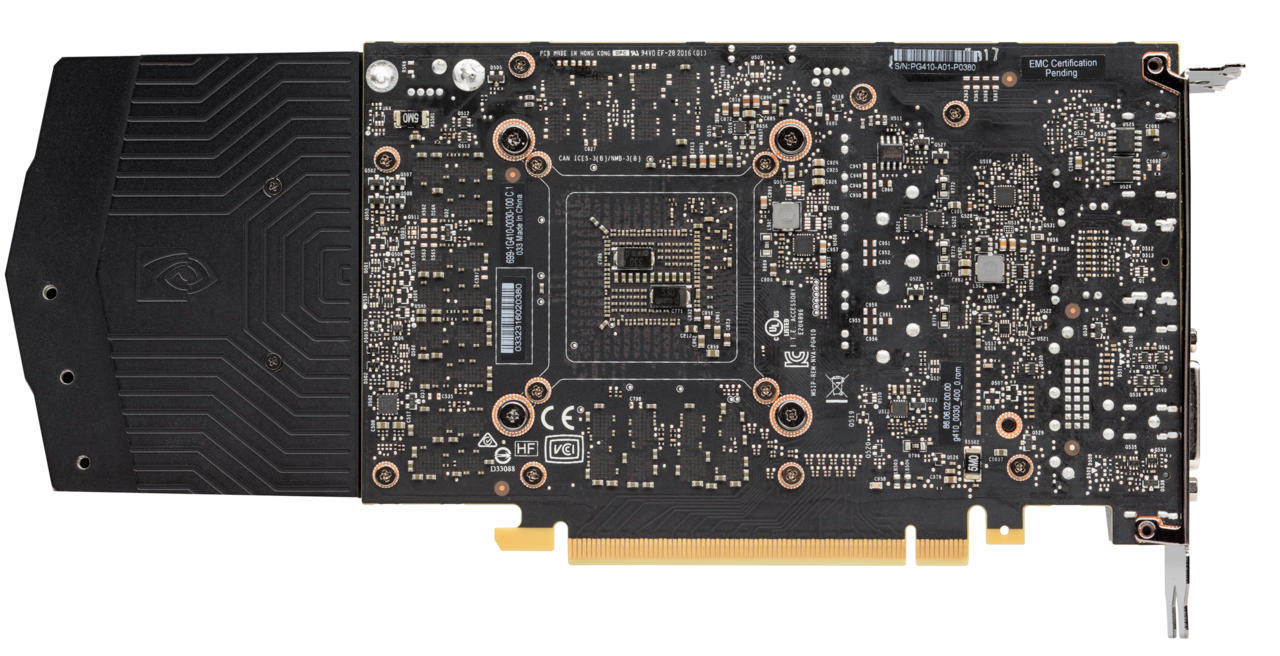
The GTX 1060 is based on the same 16nm FinFet Pascal micro-architecture as its 1080 and 1070 siblings, and Nvidia is positioning this as a card that will allow you to crank up a ton of graphical bells and whistles at 1080p. And because it’s a Pascal card, it will also support Nvidia’s new graphical technologies, such as simultaneous multi-projection (SMP), VRWorks Audio, and Ansel. You can read more about these features in my GTX 1080 review.
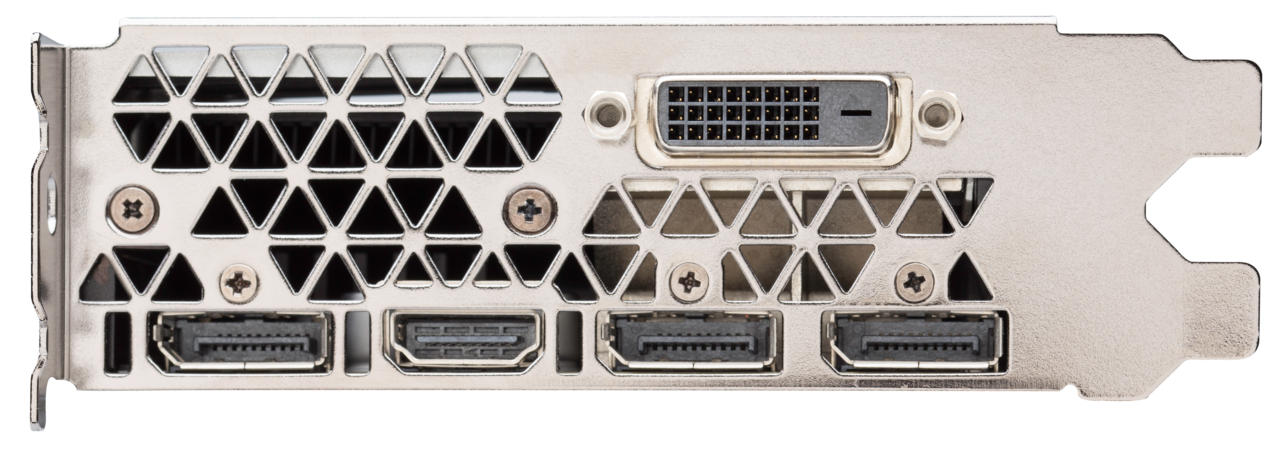
One disappointing aspect of the GTX 1060? It won’t support SLI, meaning you can’t run two cards in tandem for increased performance. When I asked Nvidia why the feature was omitted, the company told me that SLI was being reserved for top-tier cards like the GTX 1070 and 1080, and that SLI isn’t very popular among the mid-range market. Still, it’s disappointing to hear that you won’t be able to pop in another GTX 1060 to get a little more firepower down the road.
One disappointing aspect of the GTX 1060? It won’t support SLI.
Specs
The GeForce GTX 1060 is built on the same Pascal microarchitecture and 16nm FinFET production process as the GTX 1080 and 1070 before it, but it’s not based on the same GP104 GPUs as its older siblings. Instead, it uses Nvidia’s new GP106 GPU, which is tuned for power efficiency.
| Nvidia GeForce GTX 1060 | Nvidia GeForce GTX 1080 | Nvidia GeForce GTX 1070 | Nvidia GeForce GTX 980 | AMD Radeon RX 480 | |
| CUDA Cores/Stream Processors | 1280 | 2560 | 1920 | 2048 | 2304 |
| Texture Units | 80 | 160 | 120 | 128 | 144 |
| ROPs | 48 | 64 | 64 | 64 | 32 |
| Core Clock | 1506MHz | 1607MHz | 1506MHz | 1126MHz | 1120MHz |
| Boost Clock | 1708MHz | 1733MHz | 1683MHz | 1216MHz | 1266 MHz |
| Memory Clock | 8Gbps GDDR5 | 10Gbps GDDR5X | 8Gbps GDDR5 | 7Gbps GDDR5 | 7/8Gbps GDDR5 |
| Memory Bus Width | 192-bit | 256-bit | 256-bit | 256-bit | 256-bit |
| VRAM | 6GB | 8GB | 8GB | 4GB | 4/8 GB |
| Transistor Count | 4.4B | 7.2B | 7.2B | 5.2B | 5.7B |
| Teraflops | 3.8 | 8.9 | 6.5 | 4.6 | 5.8 |
| TDP | 120W | 180W | 150W | 165W | 150W |
| Manufacturing Process | 16nm FinFET | 16nm FinFET | 16nm FinFET | TSMC 28nm | 14nm FinFet |
| Architecture | Pascal | Pascal | Pascal | Maxwell | GCN 2.0 |
| GPU | GP106 | GP104 | GP104 | GM204 | Polaris 10 |
| Launch Date | 7/19/2016 | 5/27/2016 | 6/10/2016 | 9/18/2014 | 06/29/16 |
| Launch Price | $249/$299 | $599/$699 | $379/$449 | $549 | $200/$240 |
Note: Specs like stream processors, CUDA cores, and core clocks, etc. should only be used as a frame of reference against other cards within the same family for an apples-to-apples comparison.
Looking at the spec chart above, you’ll notice that the GTX 1060 has fewer CUDA cores, texture units, ROPs, Transistors, and Teraflops than its more expensive GeForce GTX 1070 sibling. While it features the same core clock as the GTX 1070, it actually features a higher 1708MHz boost clock, which is 25MHz faster. Both cards also use the same video memory type, GDDR5 VRAM clocked at 8Gbps, though the GTX 1060 only offers 6GB of it as opposed to the 1070’s 8GB allotment.
At 120 watts, the GTX 1060 also features a low thermal design power (TDP) and needs only one six-pin power connector. Nvidia recommends a 400-watt power supply unit (PSU) to supplement the card.
Benchmarks
For my test bench, I’m using the same system that I used to review Nvidia’s GeForce GTX 1080 and 1070 GPUs. It’s a rig with an Intel Core i7-5930K Haswell-E CPU clocked at 3.9GHz, coupled with 16GB of DDR4 RAM clocked at 2133MHz running in quad-channel mode.
Since Nvidia claims the GTX 1060 is as fast as the GeForce GTX 980 and 15 percent faster than AMD’s Radeon RX 480, I’ll be reviewing it against those two cards. I’ll also be comparing it against the GTX 1060’s more expensive siblings, the GTX 1080 and 1070, to see how it stacks up to the rest of Nvidia’s Pascal family.
For consistency and to encapsulate a wide range of data, I’m using the same synthetic, VR, and game benchmarks I used in the rest of my GPU reviews. I benchmarked them across three resolutions (1080p, 1440p, and 4K) and ran them at max settings to really put the cards through their paces. At the tail end of each resolution section below, I’m also including a chart for my experiential tests. This data set isn’t meant to compare the GTX 1060 against other cards, but to give you a real-world snapshot of how the card holds up playing a variety of newer titles that might not have in-game benchmarks. I used FRAPS to record average frames-per-second data here.
1080p Benchmarks
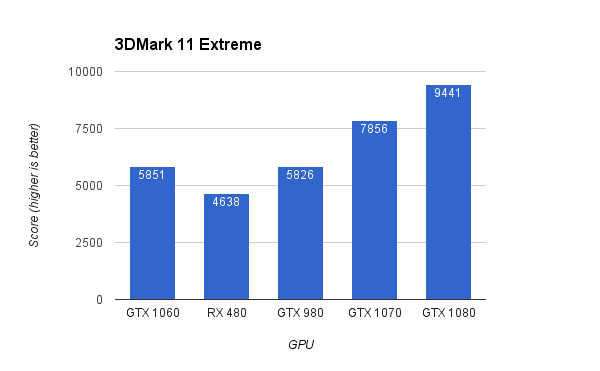
Starting things off, the GTX 1060 ends up in a statistical tie with the GTX 980 in this synthetic 1080p benchmark, which validates Nvidia’s claim that this less expensive Pascal card is just as fast as the company’s old flagship Maxwell-based GPU. The 1060 is also 26 percent faster than AMD’s RX 480 here, which is actually better than Nvidia’s assertion that the card generally runs 15 percent faster.
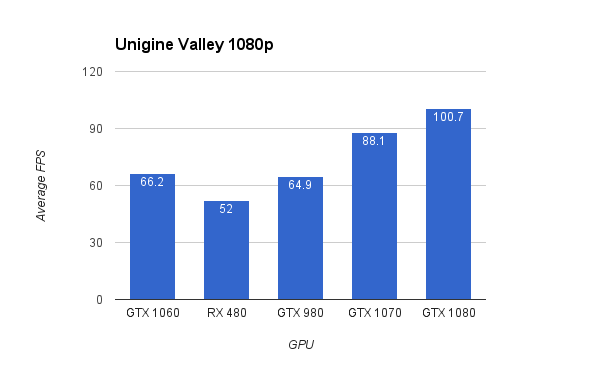
Nvidia’s GTX 1060 has an even bigger lead at 27 percent over the RX 480 in Unigine’s graphically-demanding synthetic test here. It’s also slightly faster than the GTX 980, with a 2 percent lead.

The GTX 1060 and 980 come within one frame of each other, with both titles averaging around 120 average frames per second in Irrational Games’ shooter. The 1060 is also 12 percent faster than the RX 480 in this Unreal Engine 3–powered game.
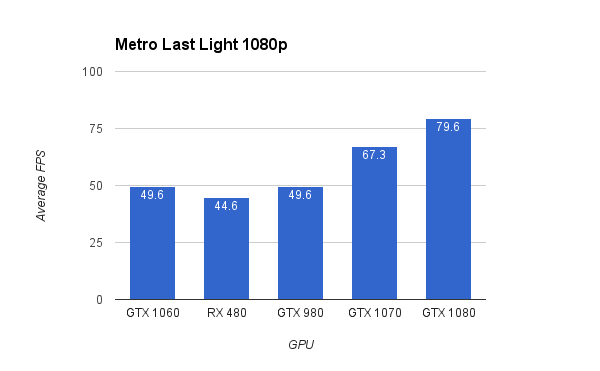
The GTX 1060 and 980 both end up getting exactly 49.6 average fps here, and they’re faster than AMD’s RX 480 by 11 percent.
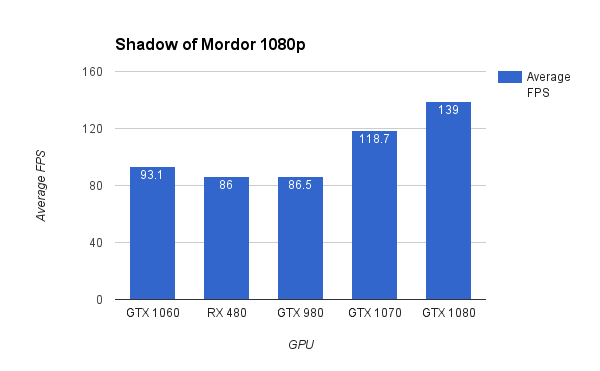
The GTX 1060 maintains a considerable 8 percent lead over the GTX 980 here, which represents the largest delta between both cards. Interestingly enough, it also maintains an 8 percent lead over the RX 480, but that conversely represents the smallest lead the Pascal card has over the RX 480. This is an indication that the GTX 980 is a bit underwhelming here, but it could also be due to the fact that Middle-earth: Shadow of Mordor pushes high-resolution textures. That might mean the Maxwell’s slower, smaller 4GB 4Gbps frame buffer couldn’t keep up with AMD’s and Nvidia’s latest offerings here.
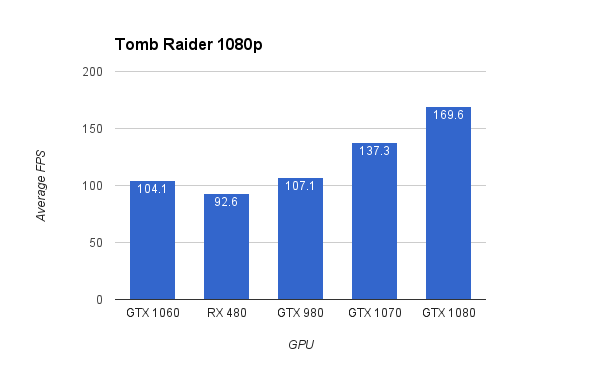
The GTX 1060 is a bit of a disappointment running the Tomb Raider benchmark at 1080p. While it’s 12 percent faster than AMD’s RX 480, it’s 3 percent slower than the GTX 980.
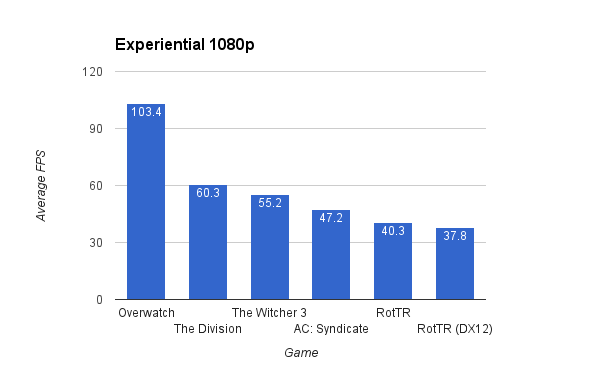
In my experiential tests, I found that the GTX 1060 was able to get above 30 average fps in every single game I threw at it. The lowest it got was in Rise of the Tomb Raider in DirectX 12 mode. From what I’ve seen so far, the game runs worse in DX12 across AMD and Nvidia cards.
It was able to get over the vaunted 60-average-fps mark in two games. In Overwatch, it reached above 100 average fps, and it just managed to squeak by that threshold in The Division.
1080p Conclusion: The GTX 1060 is a great card for 1080p gaming and will be able to max out the most graphically demanding games with playable framerates.
1440p Benchmarks

The GTX 1060 continues to kick butt in this demanding synthetic test at 1440p. It’s a whopping 23 percent faster than the RX 480 and 5 percent faster than the GTX 980.
The GTX 1060 is a great card for 1080p gaming and will be able to max out the most graphically demanding games with playable framerates.
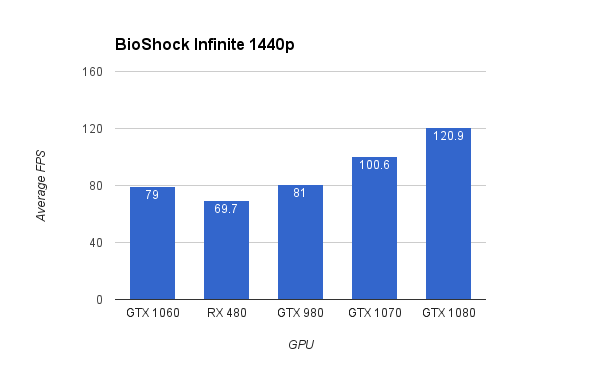
The GTX 1060 is 13 percent faster than the RX 480 running the BioShock Infinite benchmark at 1440p, but it’s 2 percent slower than the GTX 980.
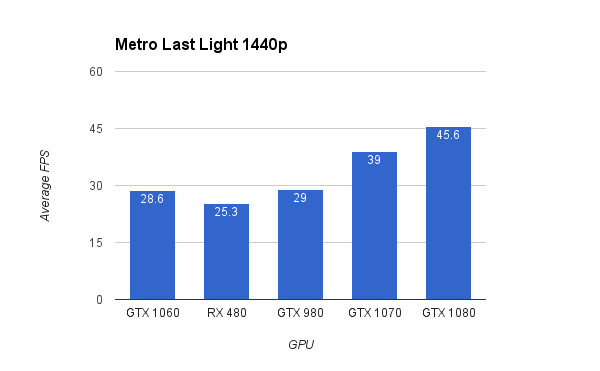
The GTX 1060 and 980 end up in a statistical tie running Metro Last Light at 1440p. Both are 13 percent faster than the RX 480, but all three of those cards are unable to muster playable framerates here, with all of them dipping below 30 average fps.
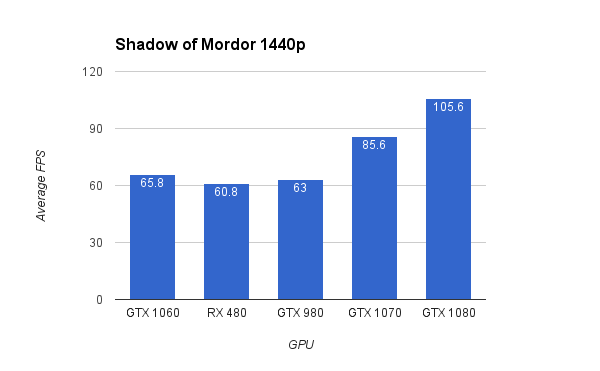
The GTX 1060 maintains its 8 percent lead in Middle-earth: Shadow of Mordor here at 1440p against the RX 480. Again, that represents the smallest delta between both cards. It’s also able to notch a notable 4 percent lead over the GTX 980, with all cards able to make it over the 60-average-fps hump.

The GTX 1060 failed to impress in the Tomb Raider benchmark at 1440p. While it’s 10 percent faster than the RX 480, it ran 3 percent slower than the GTX 980.
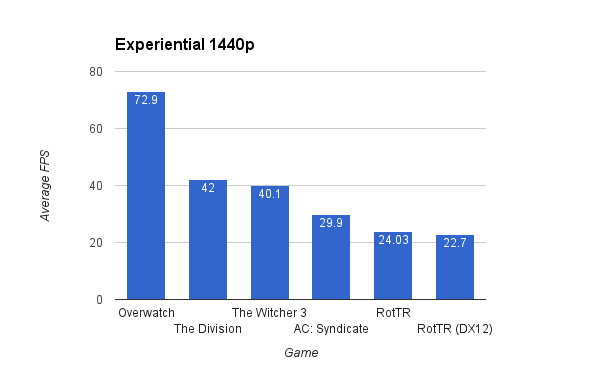
Two games here failed to pass the 30-average-fps test with max settings. While the majority of games here are able to get above 30 average fps, the only title to power past the esteemed 60 is Overwatch.
1440p conclusion: The GTX 1060 will be able to max out the majority of games at 1440p with playable framerates, with the exception of the most graphically demanding games/unoptimized PC ports.
4K Benchmarks
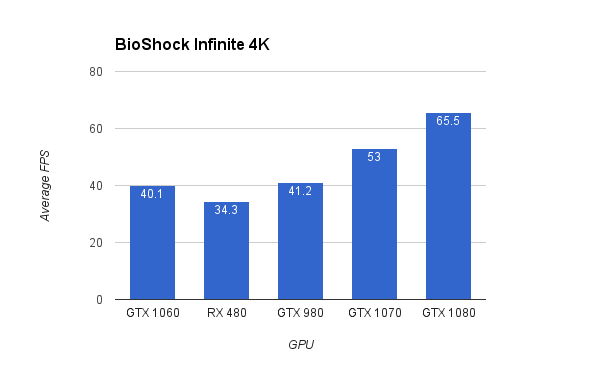
The GTX 1060 is 17 percent faster than the RX 480 here, which is fast enough for it to get over the 40-average-fps mark. However, it’s three percent slower than the 980.
The GTX 1060 will be able to max out the majority of games at 1440p with playable framerates, with the exception of the most graphically demanding games/unoptimized PC ports.
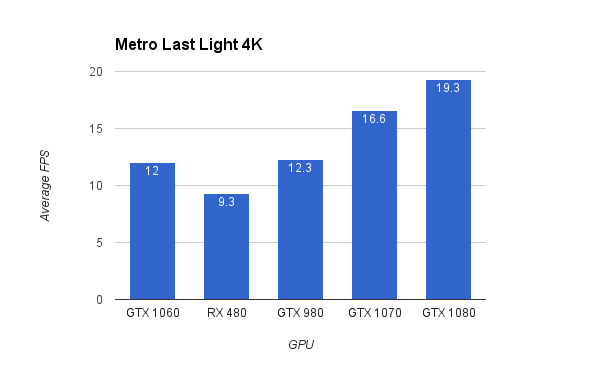
At 4K in Metro Last Light, the GTX 1060 was a whopping 29 percent faster than the RX 480, which represents the largest lead it has over AMD’s card. At the same time, however, the GTX 1070 also enjoys its largest lead over the 1060 here, with a 28 percent delta. Regardless, none of the cards here are able to get playable frame rates with everything maxed out at 2160p, with even the super-fast GTX 1080 netting an unplayable 19.3 average fps.

The GTX 1060 maintains a conservative nine percent lead over the RX 480 in the Middle-earth: Shadow of Mordor benchmark at 4K, but it earns a noticeable four percent lead over the GTX 980.

The GTX 980 manages to outperform the GTX 1060 here by five percent, which represents the biggest lead the Maxwell-based card has over Nvidia’s new mid-range offering. While the 1060 is nine percent faster than the RX 480, this represents one of the smallest performance gaps between the two cards.

Aside from Overwatch, which actually managed to get above the vaunted 60-average-fps hump here, the GTX 1060 failed our 4K experiential tests, with everything else running below 30 average fps.
4K conclusion: While Nvidia isn’t marketing the GTX 1060 as a 4K capable card, I wanted to see how it would perform here at 2160p. While it can run some moderately taxing games at 4K with playable framerates, I wouldn’t recommend this card for 4K gaming.
I wouldn’t recommend this card for 4K gaming.
VR Benchmark

While Nvidia advertises the GTX 1060 as being on par with the GTX 980 in overall gaming performance, the company does assert that the Pascal card is better for VR. With Valve’s SteamVR Performance Test, the 1060 sees a huge 23 percent lead over the 980. This is impressive, considering the 980 is quite a bit faster than the GTX 970, which is the recommended baseline GPU for VR. It’s also 13 percent faster than the RX 480, which is an affordable, fantastic VR card in its own right.
While the 1060 is nine percent slower than the GTX 1070, this benchmark represents the smallest delta between the two cards. If you want a good, affordable VR card from Nvidia, the GTX 1060 is an excellent choice.
If you want a good, affordable VR card from Nvidia, the GTX 1060 is an excellent choice.
GTX 1060 Temperatures, Noise, and Overclocking
Now that you have a good idea of how the GTX 1060 performs, you might want to know how loud, hot, and overclockable it is. The card carries a maximum GPU temp rated at 94 degrees Celsius, but I personally never saw it get anywhere near that high. At idle, the fan speed ran at 40 percent with a very quiet 1,300rpm. This put the temperature at a cool 33 degrees Celsius.
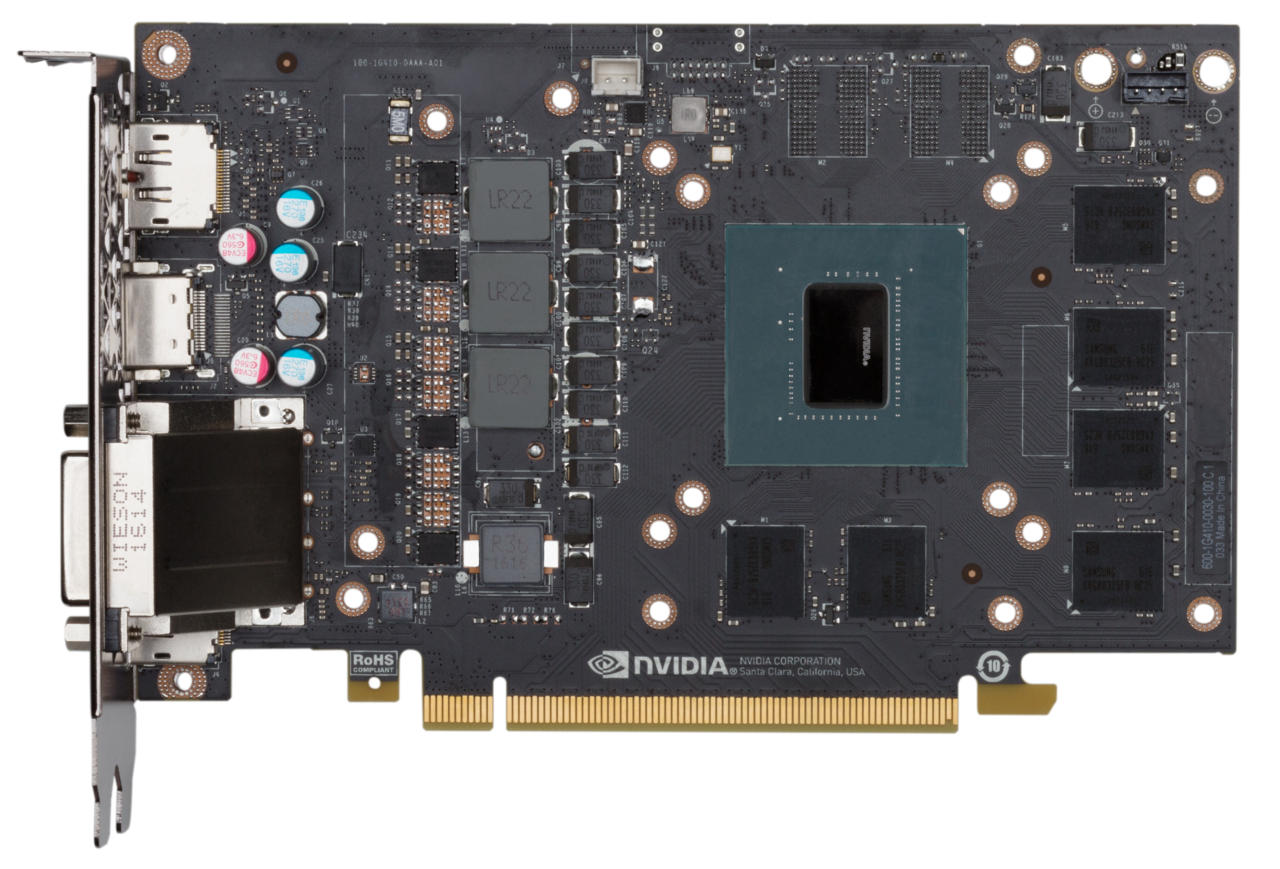
When running the Unigine Valley benchmark to put a load on the card, the fans started spinning up to 1,880rpm, which was still very quiet. Temperatures also hit the mid-60 degrees Celcius here, which is still relatively cool. The boost clock went above 1870MHz, which is actually faster than Nvidia’s advertised boost speed.
In terms of overclocks, pushing the fan and power targets to their respective max settings in EVGA Precision, I was able to boost the GPU core and memory offsets by 190MHz and 600MHz, respectively. This resulted in a 14 percent performance boost, which is quite impressive. Surprisingly, the card wasn’t blisteringly loud running at its max 3,200rpm, either.
I was able to boost the GPU core and memory offsets by 190MHz and 600MHz, respectively. This resulted in a 14 percent performance boost, which is quite impressive.
Conclusion
While Nvidia is marketing the GeForce GTX 1060 as a capable graphics card to run 1080p games maxed out, it can also handle many 1440p games well. According to my numbers, the $300 graphics card runs 1.6 percent faster than the GTX 980--which is a card that you’ll still find online for roughly $100 more. While it isn’t always faster than the GTX 980, my tests do validate Nvidia’s assertions that the two cards are generally comparable.
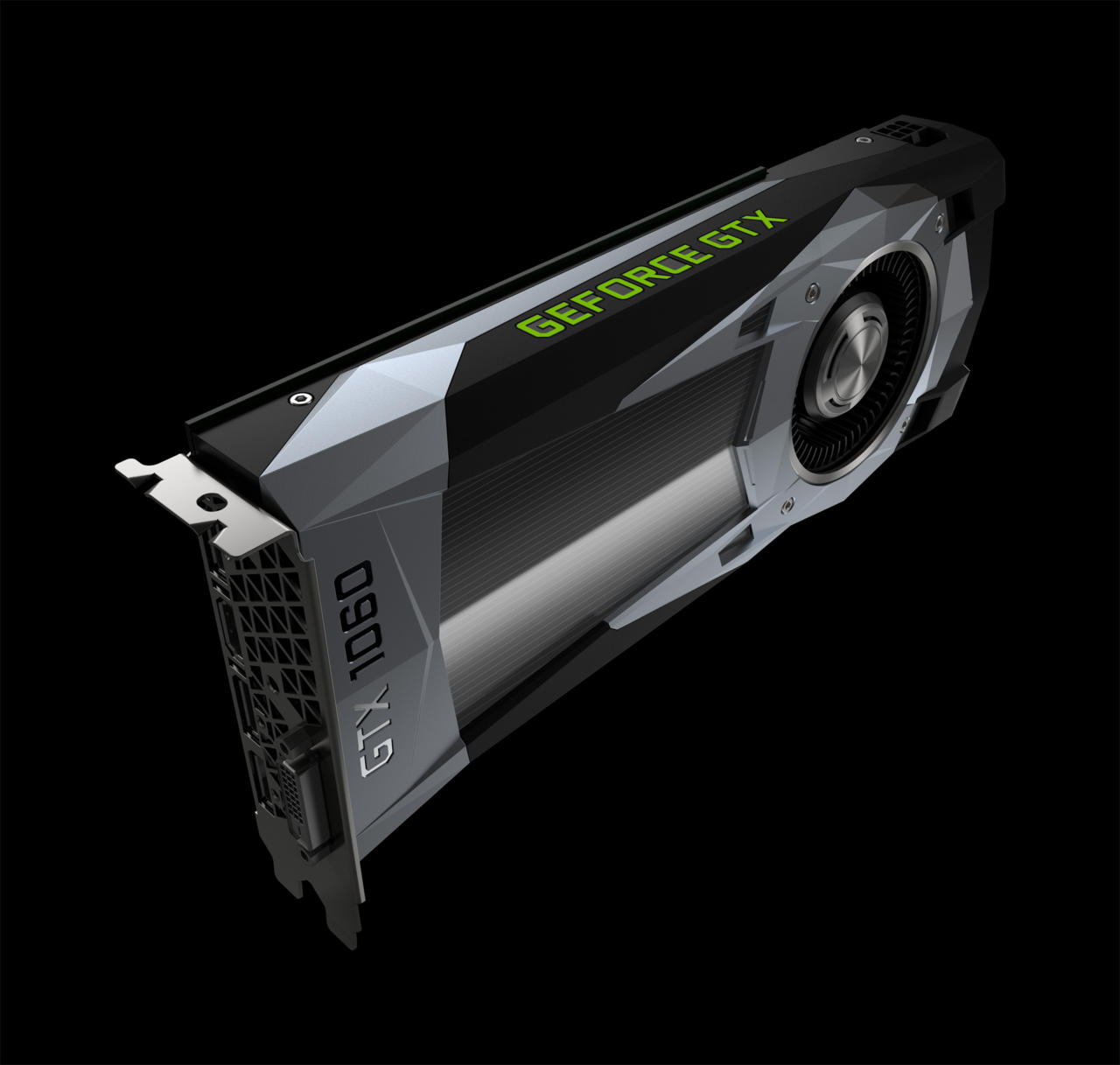
Nvidia also claims that the GTX 1060 is 15 percent faster than AMD’s Radeon RX 480 on average. When I worked out the math, that was actually the exact number I came up with. While the GTX 1060 is definitively faster, the $240 8GB RX 480 is 25 percent cheaper than the Founders Edition GTX 1060, so AMD’s card is still the better value. Compared to its next closest sibling, the GTX 1070, the 1060 is 23.1 percent slower on average, but it’s also 33 percent cheaper. This makes it a great deal in its own right.
Nvidia also claims that the GTX 1060 is 15 percent faster than AMD’s Radeon RX 480 on average. When I worked out the math, that was actually the exact number I came up with.
Overall, the GTX 1060 is a great card for 1080p gaming, offers excellent VR performance for the price, overclocks well, runs cool, and is super-quiet. The one major knock is the lack of SLI support, but beyond that, I’d highly recommend the GeForce GTX 1060 to most PC gamers.
Got a news tip or want to contact us directly? Email news@gamespot.com
Join the conversation